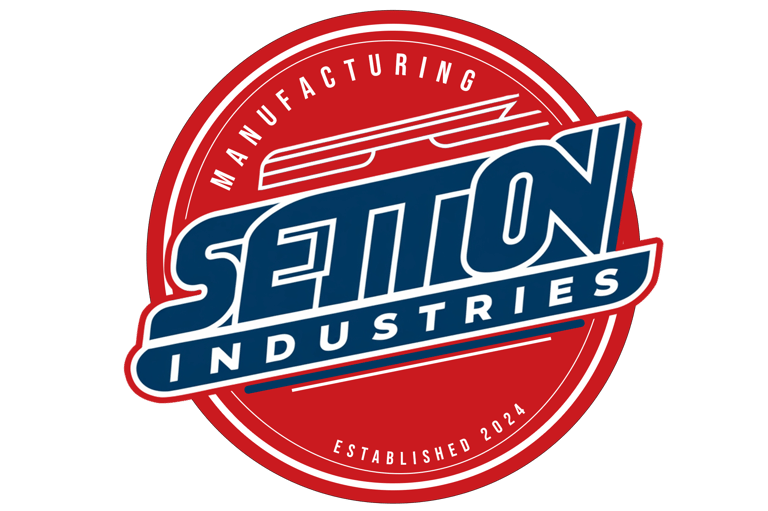2D vs 3D: Which Type is Right for Your Project?
7/20/2025


In the fast-paced world of manufacturing and engineering, choosing the right design approach can make or break your project's success. At Setton Industries, we specialize in turning innovative ideas into tangible realities through expert consulting and precision modeling solutions. With our roots in aerospace giants like SpaceX, Blue Origin, and United Launch Alliance, we understand the nuances of design digitization. Whether you're sketching a simple component or engineering a complex system, the decision between 2D and 3D modeling is crucial.
Understanding 2D Modeling
2D modeling involves creating flat, two-dimensional representations of designs, such as blueprints, schematics, or technical drawings. These are typically produced using software like AutoCAD or DraftSight and focus on length and width without depth.
Pros of 2D Modeling:
- Simplicity and Speed: 2D designs are quicker to create and modify, making them ideal for initial concepts or straightforward projects.
- Cost-Effective: Requires less computational power and expertise, keeping costs low for small-scale or budget-conscious endeavors.
- Ease of Communication: Easy to print, share, and annotate, which is perfect for regulatory compliance or basic manufacturing instructions.
Cons of 2D Modeling:
- Limited Visualization: Lacks depth, making it harder to spot spatial issues or interferences in complex assemblies.
- Error-Prone in Complexity: For intricate projects, multiple views (e.g., top, side, front) are needed, increasing the risk of misinterpretation.
- No Simulation Capabilities: Can't easily integrate with advanced tools like finite element analysis (FEA) or 3D printing previews.
2D is often the go-to for projects like electrical schematics, floor plans, or simple machined parts where depth isn't a factor.
Exploring 3D Modeling
3D modeling adds the third dimension—depth—creating lifelike, volumetric representations using tools like SolidWorks, Fusion 360, or CATIA. This allows for virtual prototypes that can be rotated, sectioned, and analyzed from any angle.
Pros of 3D Modeling:
- Enhanced Visualization and Accuracy: Provides a realistic view, helping teams identify design flaws early and improve collaboration.
- Advanced Functionality: Supports simulations, animations, and integrations with CNC machining, 3D printing, or virtual reality for testing.
- Efficiency in Complex Projects: Ideal for assemblies with moving parts, as it automates bill of materials (BOM) generation and reduces rework.
Cons of 3D Modeling:
- Higher Complexity and Time: Requires more skill and time to build, especially for detailed textures or animations.
- Resource-Intensive: Demands powerful hardware and software, potentially increasing upfront costs.
- Overkill for Simple Tasks: Not necessary for basic designs, where it could complicate the process unnecessarily.
3D shines in aerospace, automotive, or product development projects involving prototypes, ergonomics, or multi-part interactions.
2D vs 3D: A Side-by-Side Comparison
To help you decide,
Best For:
2D = Simple, flat designs; quick sketches
3D = Complex, volumetric projects; prototypes
Cost:
2D = Low
3D = Higher initial investment
Time to Create:
2D = Fast
3D = Longer, but saves time in revisions
Visualization:
2D = Basic (multiple views needed)
3D = Immersive and interactive
Applications:
2D = Blueprints, wiring diagrams
3D = Simulations, 3D printing, assemblies
Software Examples:
2D = AutoCAD, Illustrator
3D = SolidWorks, Fusion360
Ultimately, the choice depends on your project's scope, budget, timeline, and end goals. For instance, if you're validating a concept quickly, start with 2D. But for manufacturing readiness or investor presentations, 3D's depth is invaluable. It is important to note that 3d models can easily be converted into 2d drawings as well.
How Setton Industries Can Guide Your Choice
At Setton Industries, we don't just consult—we digitize and optimize. Our team, led by experts with hands-on experience in high-stakes aerospace manufacturing, offers tailored 2D and 3D digitization services. Whether converting a rough sketch into a precise 2D drawing or building a full 3D model for simulation, we ensure your project launches successfully. Based in Brevard County, Florida, we're here to assess your needs and recommend the optimal path, leveraging precision modeling to minimize risks and maximize efficiency.
Ready to elevate your project? Contact us today
In conclusion, 2D and 3D each have their place in the manufacturing toolkit. By understanding their strengths, you can select the right one—or even a hybrid approach—for unbeatable results. At Setton Industries, we're committed to your success every step of the way. Stay tuned for more insights on innovative manufacturing strategies!
© 2025. All rights reserved.


CAGE/NCAGE #: 115Y9 | UEI: JJPTJMGHH2S5 | D-U-N-S #: 12-912-5897 | NAICS CODES: 541330, 541690
